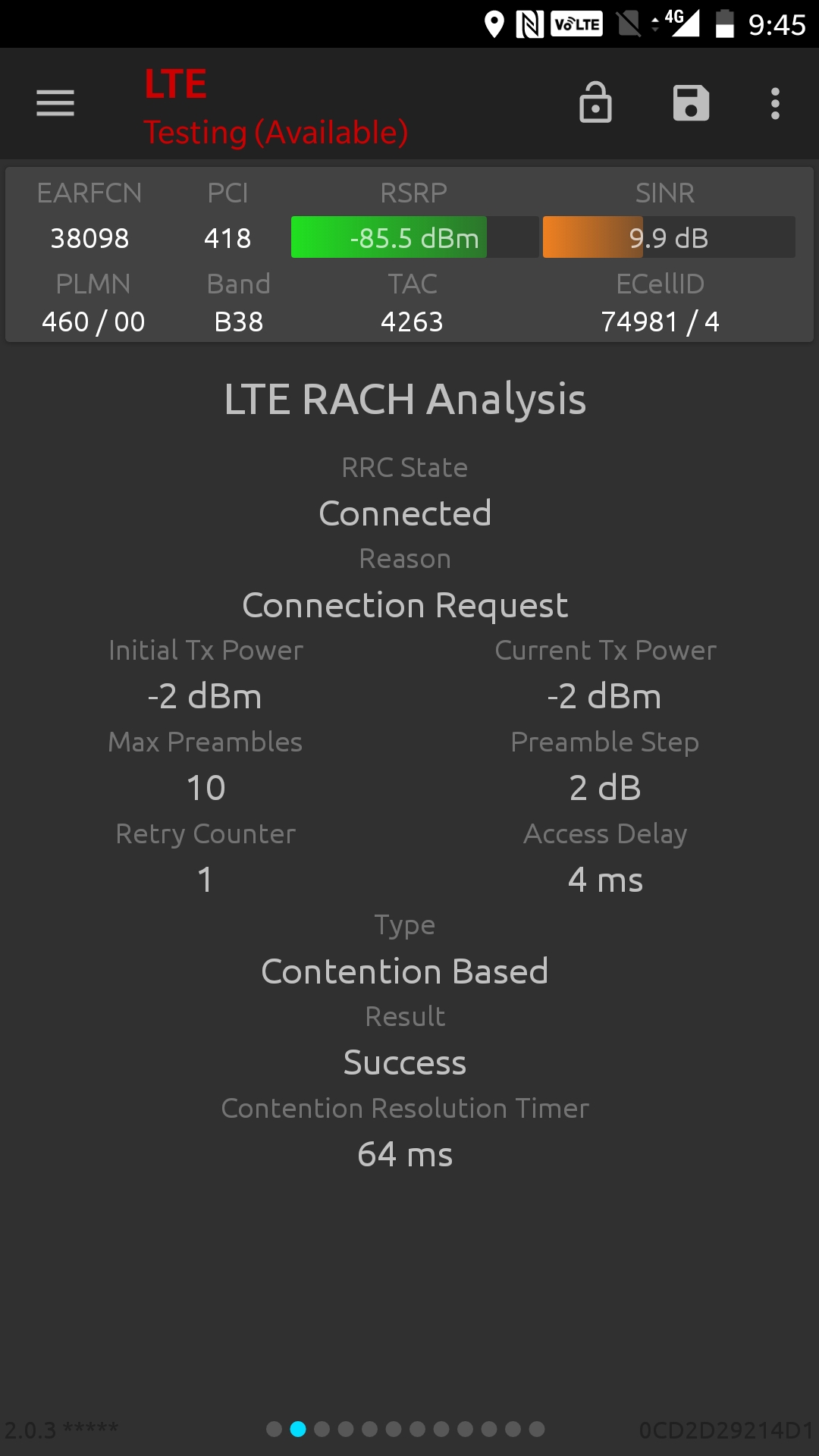LTE RACH and VoLTE Analysis
|
The LTE RACH Analysis will show differently as RACH only or RACH with VoLTE. RACH analysis only RRC State: “Idle” or “Connected”, “Camped”, “Suspended”, “Connecting”, “IRAT To LTE Started”, “Closing” Reason: Reason for RACH signaling. This is indicated for each RACH attempt. One of: {Connection Request, Radio Link Failure, UL Data Arrival, DL Data Arrival, Handover}. Tx Power Ord/Cur.: transmit power of first RACH preamble (dBm).Current means Transmit power of current RACH preamble (dBm). Max Preambles: Maximum number of preambles in one preamble ramping cycle. Taken from LTE Layer 3 message System Information Block 2. Preamble Step: Power ramping step size, power increase between consecutive preambles (dB). Taken from LTE Layer 3 message system Information Block 2. Retry Counter: retried counters of RACH attempts Type: RACH procedure type: “Contention Free” or “Contention Based”. Result: RACH procedure result. One of: {Success, Failure at MSG2, Failure at MSG4 due to CT timer expired, Failure at MSG4 due to CT resolution not passed, Aborted} Resolution Timer: MAC contention resolution timer expressed as a number of subframes. Taken from LTE Layer 3 message System Information Block 2. When VOLTE call is made, the fragment shown like the second picture Call Type: Voice or Video AMR RATE DL/UL: AMR Rate of downlink and uplink Codec DL/UL: differently used AMR codec, WB or NB SSRC DL/UL: Source of the destined IMS sources for downlink and uplink. Payload Size: the average Payload size of total transmitted IMS packets. RTP Jitter: Inter-Packet Delay Variation. The difference between the one-way-delay of two packets, calculated according to RFC 3393. IPDV: The variance in the inter-arrival time of the RTP packets calculated according to RFC 3550 (Section 6.4.1) Packet Loss: percent of RTP packets are lost, calculated by looking for discontinuity in the RTP Sequence Number |


